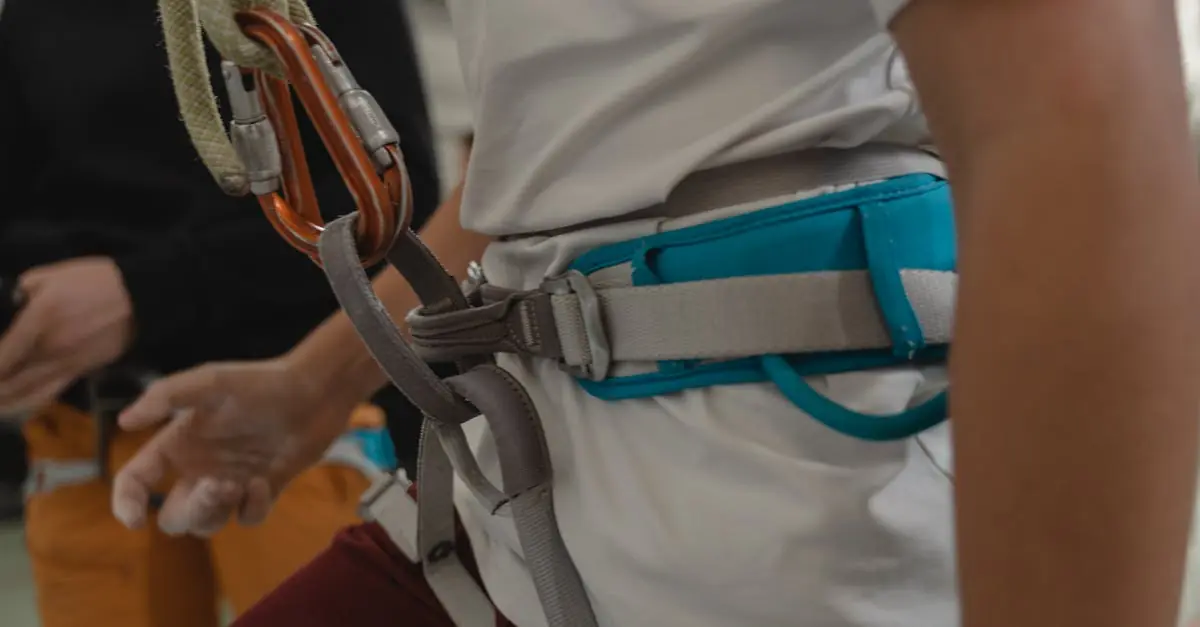Climbing to new heights isn’t just about finding the right rock; it’s about having a solid training plan that won’t leave you hanging. Whether you’re a seasoned pro or just starting out, a well-structured training regimen can make all the difference. Imagine scaling those intimidating routes with ease while your friends are left gasping for breath—now that’s a view worth training for!
Table of Contents
ToggleOverview of Climbing Training Plans
Climbing training plans play a crucial role in enhancing performance. A structured approach aids climbers in reaching their goals more effectively.
Importance of Structured Training
Structured training provides a roadmap to improve climbing abilities. It fosters consistency and focus, which are essential for skill development. Engaging in planned workouts allows climbers to track their progress over time. Specific training sessions build strength, endurance, and technique. Each element of training contributes to tackling more advanced routes. Climbers often find that dedicated training enhances not only physical capabilities but also mental resilience.
Types of Climbing Training Plans
Climbing training plans come in various forms to cater to different needs. Specific plans often focus on strength training, endurance, or technique improvement. A strength-focused plan usually emphasizes exercises such as weighted pull-ups and campus board workouts. Endurance plans might include longer gym sessions or outdoor climbs with sustained efforts. Technique plans concentrate on movement skills and footwork drills. By choosing appropriate types, climbers align their training with specific objectives. Each plan type serves to refine distinct aspects of climbing proficiency.
Key Components of Effective Training Plans
Effective climbing training plans consist of several crucial elements. Each component plays a significant role in achieving success.
Strength Training
Strength training focuses on building muscle power and stability. Climbers benefit from targeted workouts that isolate muscle groups used during ascents. Exercises such as pull-ups, deadlifts, and fingerboard training enhance grip strength and body control. Consistency in strength workouts leads to increased performance on difficult routes. Incorporating varied exercises prevents plateaus and promotes overall well-being.
Endurance Training
Endurance training improves a climber’s ability to sustain effort over longer periods. Activities like running, cycling, and interval training help develop cardiovascular stamina. Climbers should integrate these activities into their weekly routine to enhance aerobic capacity. Gradually increasing duration and intensity of endurance workouts maximizes efficiency without risking injury. Consistent endurance training fosters better performance on lengthy or complex climbs.
Technique Development
Technique development emphasizes the refinement of climbing skills. Practicing foot placements, body positioning, and route-reading enhances overall efficiency. Focusing on these skills enables climbers to conserve energy during climbs. Video analysis can provide valuable feedback to help identify areas for improvement. Over time, developing strong technique allows climbers to tackle routes with greater confidence and effectiveness.
Customizing Your Climbing Training Plan
Customizing a climbing training plan ensures it addresses individual needs and capabilities. Both skill assessment and goal-setting play vital roles in this process.
Assessing Your Current Skill Level
Understanding one’s current skill level provides a foundation for improvement. Climbers should evaluate their physical abilities, technical skills, and mental preparedness. Consider using a climbing grade system to determine strengths and weaknesses. Climbing with a partner can offer additional insights into performance. Keeping a journal of climbing experiences helps identify areas for growth. This assessment enables climbers to focus on specific aspects that require enhancement.
Setting Goals and Milestones
Establishing clear goals offers direction in training. Climbers should set short-term and long-term objectives that are measurable and achievable. Specific targets, like completing a certain route or improving endurance, help maintain motivation. Breaking down larger goals into smaller milestones allows for regular progress monitoring. Reassessing goals periodically ensures they remain relevant as skills improve. This structured approach fosters a sense of accomplishment and drives continuous development in climbing.
Common Mistakes to Avoid
Climbers often fall into traps that hinder their progress. Identifying and avoiding these common mistakes is essential for effective training.
Overtraining
Overtraining manifests when climbers push their bodies beyond limits without adequate rest. Signs of overtraining include persistent fatigue, decreased performance, and increased risk of injury. Burnout can appear at any skill level, leading to frustration and setbacks. Striking a balance between training intensity and recovery time prevents these outcomes. Gradually increasing training loads allows the body to adapt, building strength without adverse effects.
Neglecting Flexibility and Recovery
Many climbers prioritize strength and endurance at the expense of flexibility and recovery. Flexibility plays a vital role in maintaining proper form and preventing injuries. Stretching exercises enhance range of motion, improving climbing technique. Recovery periods are equally important, as they allow muscles to repair and grow stronger. Incorporating rest days and active recovery sessions into a training plan promotes overall performance. Ignoring these aspects can lead to long-term issues, ultimately affecting climbing goals.
A well-crafted climbing training plan is vital for any climber aiming to enhance their performance. By focusing on strength endurance and technique climbers can achieve their goals more effectively. Customizing a training regimen to fit individual needs ensures that progress is both measurable and motivating.
Avoiding common pitfalls like overtraining and neglecting recovery is essential for long-term success. Incorporating flexibility and rest into the routine not only helps prevent injuries but also boosts overall performance. With dedication and the right approach climbers can reach new heights and tackle increasingly challenging routes with confidence.



